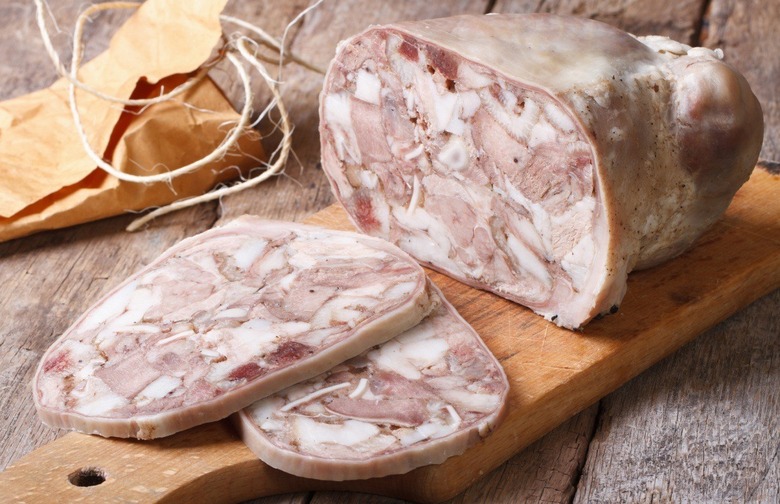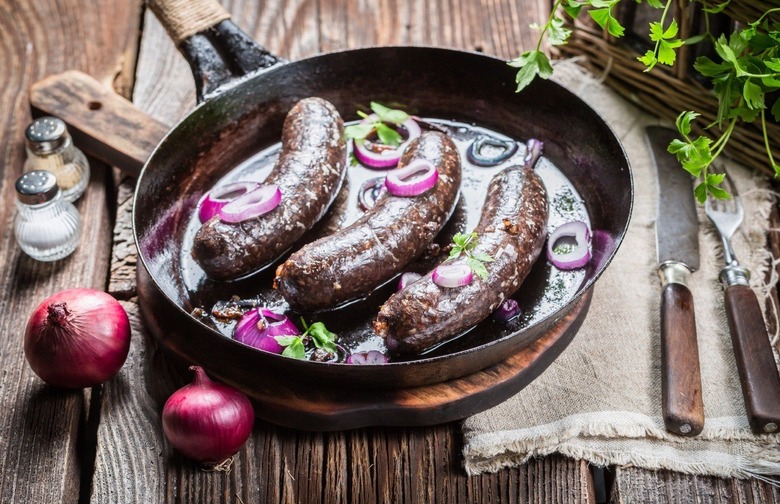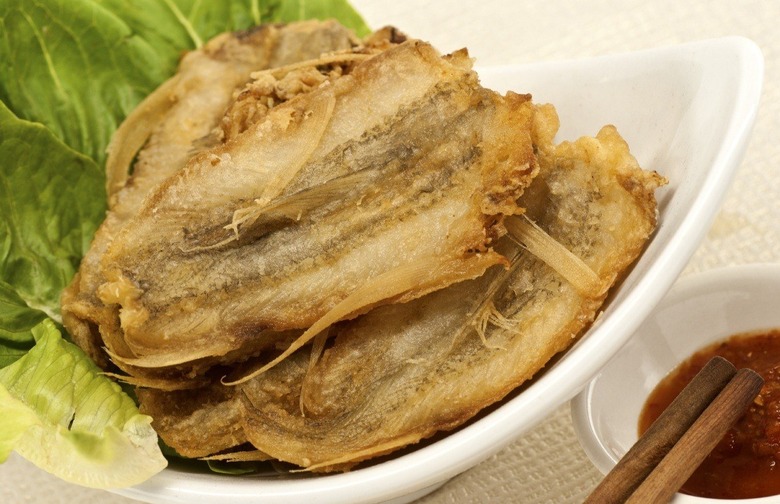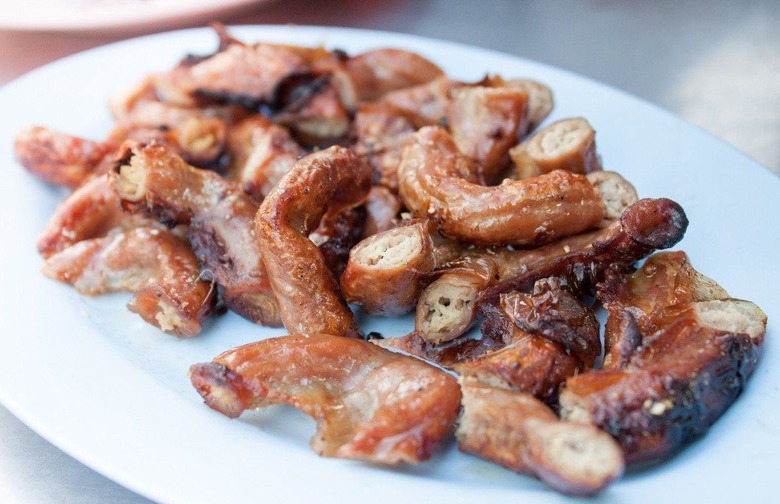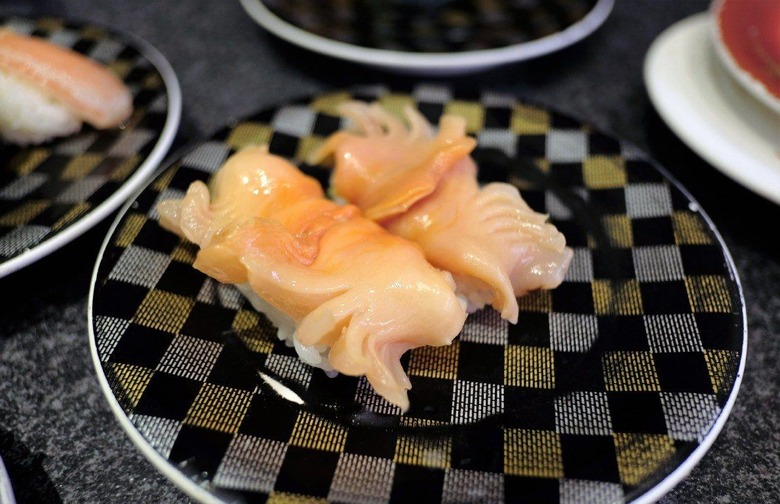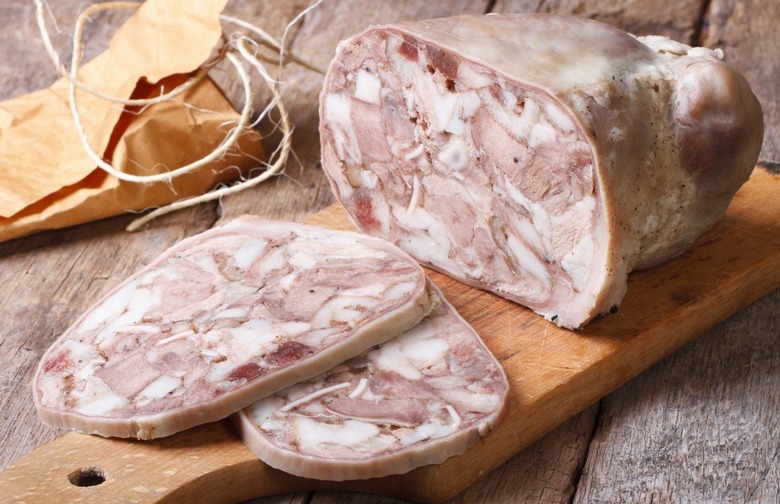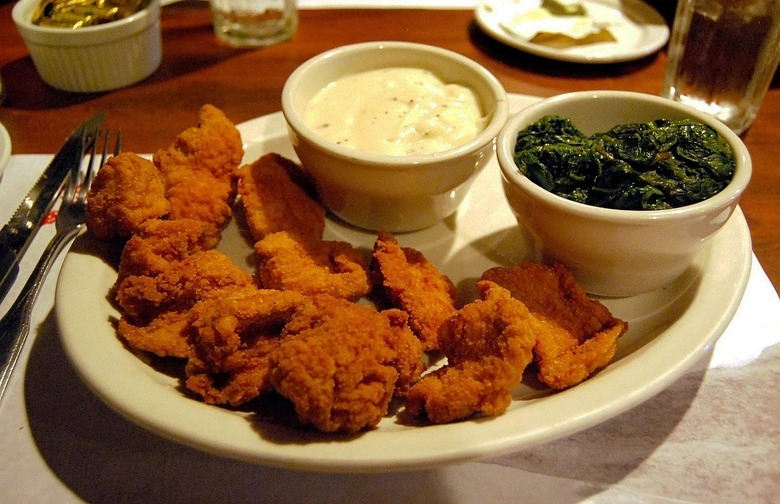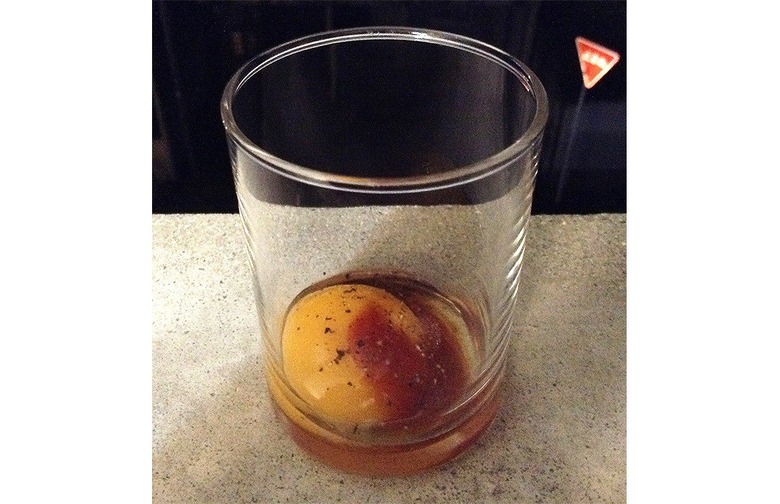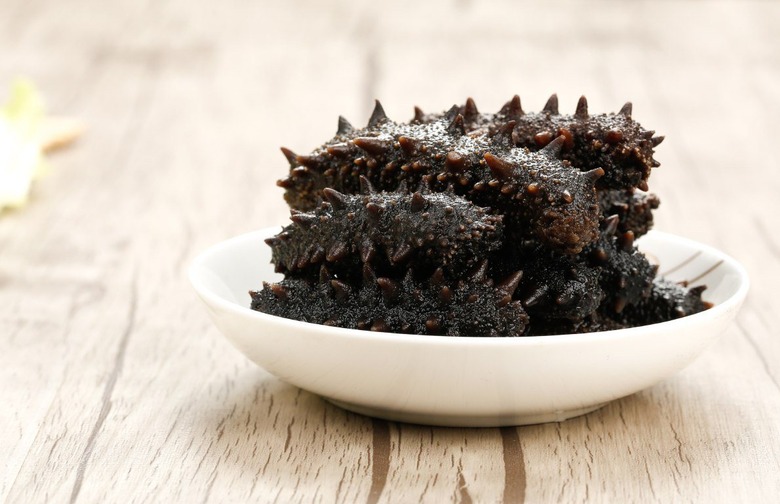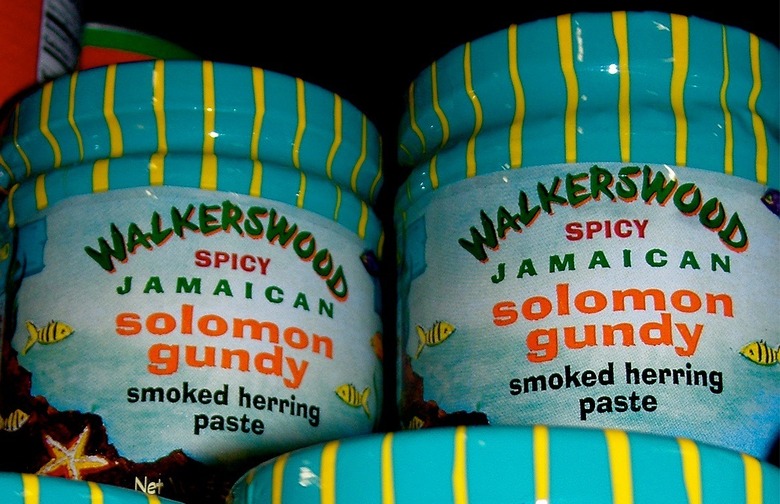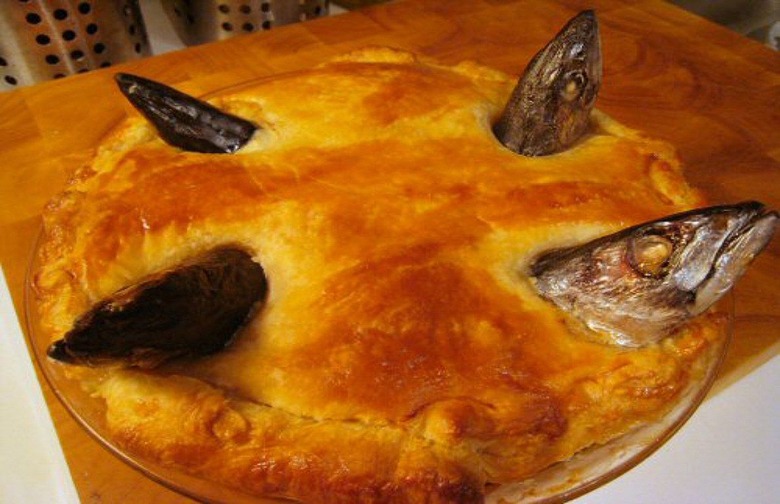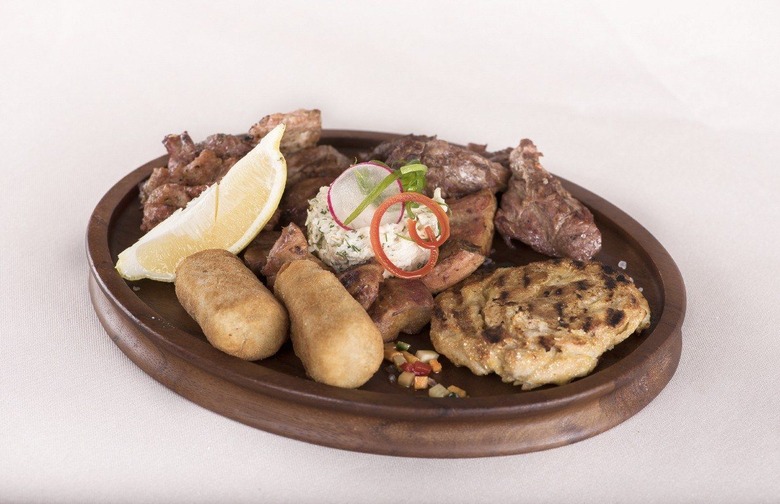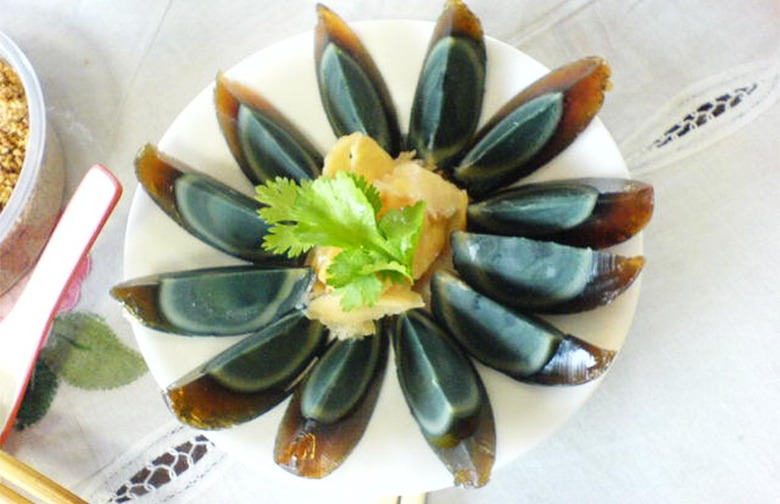Sweetbreads, Prairie Oysters, And 13 Other Foods That Aren't What They Sound Like Gallery
Foods are under no obligation to have a name that makes any sense. For every spaghetti and meatballs out there, there's also Welsh rarebit, whoopie pies, and chow chow. Some food names are pretty self-explanatory, but others are serious head-scratchers. And not only that; for some confusingly named dishes, the actual ingredients include things that... Well, let's just say that they would be right at home on Andrew Zimmern's Bizarre Foods. We've tracked down 15 primo examples.
In a perfect world, we'd be able to identify a food item just by hearing its name. Restaurants really hate it when somebody sends back a dish because they didn't know what one of its components was; we imagine that plenty of perfectly good dishes of sweetbreads went to waste because the person who ordered it thought that they'd be receiving, oh I don't know, some kind of sweet bread. The benign-sounding bottarga is shaved on top of many fine Italian pasta dishes, but plenty if people order it without realizing that bottarga is pungent, salted and cured mullet roe that smells quite a bit like fish food.[related]
Ordering something without knowing exactly what's in it and being surprised by the results is a common mistake that even we at The Daily Meal have been guilty of; once while on a trip to Italy I overconfidently ordered an obscure dish called la finanziera, which was simply described as "Piemontese meat stew;" it wasn't until it got to the table that I learned that its components included cock's comb, rooster wattles, rooster and veal testicles, calf brains, calf veins, and sweetbreads. Lesson learned!
The moral of the story? If you don't recognize the name of a component of a dish you're about to order, don't be afraid to ask. It won't make you look dumb, and can definitely spare you from being embarrassed (and spare your server from being annoyed) later on.
Ambrosia
"The definition of the word "ambrosia" is "food of the gods." So why, of all the foods in existence, somebody decided to mix together orange segments, pineapple, maraschino cherries, coconut, chopped nuts, mini marshmallows, heavy cream, whipped cream, and sour cream and call it ambrosia is beyond us. Blame the fact that it was invented in the 1800s.
Black Pudding
While it is black, this popular U.K. dish may not be what you think of as "pudding." In fact, it's more of a sausage, made with oatmeal or barley, pork or beef fat, and plenty of beef blood, from which it gets its black color. It's a common component of an English breakfast.
Bombay Duck
Bombay duck isn't a duck at all; in fact, it's another name for lizardfish, which is usually dried and salted, or fried when fresh. It's most popular in parts of India.
Chitterlings
Also spelled and pronounced chitlins, chitterlings are made by cleaning and cooking the small intestines of a pig. In the South, they're usually slow-cooked for a very long time before being battered and fried, and if not cleaned properly they can be all kinds of bad news.
Geoduck
Also bearing no relation to duck, geoduck (pronounced "gooey-duck") is a very large clam with a large, edible siphon. Eaten almost exclusively in parts of Asia, it's usually listed on sushi menus as "giant clam," and when raw and thin-sliced it has a slightly crunchy texture.
Head Cheese
Well, half of this name is accurate: It's made by taking all of the meat from the head of a calf or pig and forming it into a terrine with gelatin. No cheese required, thankfully.
Lamb Fries
Don't let Burger King's Chicken Fries lead you to thinking that the name of this dish is literal; these are thin-sliced, breaded, and fried lamb testicles.
Milt
"Milt" is a rather benign name for a food that's anything but. Also called soft roe, it's... Well, let's just call it the male equivalent of fish eggs and leave it at that.
Prairie Oysters
You won't find many oysters on the prairie, which should be the first sign that prairie oysters aren't what they seem. In reality, a prairie oyster is a raw egg cracked into a glass and topped with Worcestershire sauce, Tabasco, salt, and pepper, and drunk down in one shot. We hear it's good for hangovers! It's also a blanket term for any sliced and fried testicle, so definitely ask before you order.
Rocky Mountain Oysters
Also not exactly oysters, Rocky Mountain oysters are calves testicles, thin-sliced, breaded, and deep-fried.
Sea Cucumber
Sea cucumbers aren't vegetables, even though they might look like one. They're actually a type of marine animal called an echinoderm, related to sea urchins and starfish. Considered a delicacy in parts of Asia, they're served in a wide variety of dishes and have a slippery texture.
Solomon Gundy
Literally nothing about this name implies what the food actually is, which is unfortunate for people who aren't fans of pickled fish. In Jamaican cuisine, it's a paste made with pickled smoked fish (usually red herring), spiced with chile peppers and seasonings and served with crackers. In Nova Scotia, Solomon Gundy is the name given to pickled herring and onion.
Stargazy Pie
What sounds like a fun dessert is actually an oddball savory British pie. And not just any pie; it's usually made with several types of fish, milk, hard-boiled eggs, bacon, mustard, and potatoes, and its signature feature is fish heads poking out through the pastry crust.
Sweetbreads
Sweetbreads are decidedly not what they sound like. This delicacy is actually either the thymus or pancreas of a calf or veal, and it's known for its soft texture and mild taste.
Thousand Year-Old Egg
Also called century egg, preserved egg, hundred year egg, or pidan, this is one of the oddest egg treatments you'll ever encounter, but it doesn't actually take a thousand (or a hundred) years to make it. These eggs are preserved in a mixture of ash, clay, salt, quicklime, and rice hulls for up to several months, and at the end of the process the white becomes a translucent, salty brownish jelly, and the yolk dark green and creamy with a strong ammonia smell. It's not for the faint of heart, but you can always just choose from one of these 50 ways to cook an egg instead.
More From The Daily Meal:
10 British Foods Americans Just Don't Understand
16 Confusing Sushi Terms, Decoded
You're Probably Pronouncing These 30 Food Words Wrong
Moo Goo Gai Pan and Other Mysterious Chinese Menu Items, Explained
